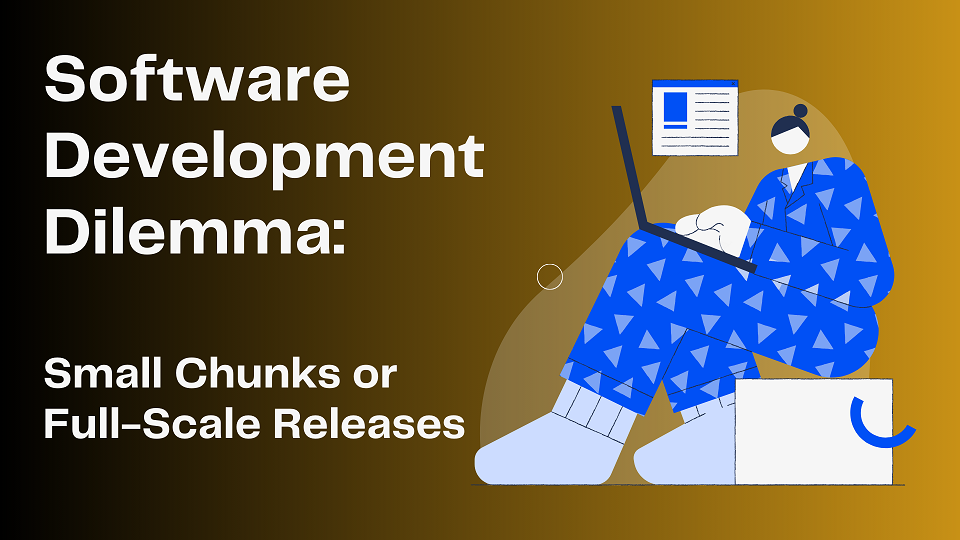Software development can sometimes feel like solving a puzzle with too many pieces.
But what if I told you that breaking it down into small, manageable chunks could be the key to unlocking success?
Let me share my experience with you!
It is best to plan, develop, and release in small chunks because:
- You’d want to get the new features out ASAP into the hands of your users
- It is faster and easier to test small chunks compared to big chunks
- Big projects will take forever to release and they usually take 2–4 times longer than expected because of complications that almost always arise
- You’d want to get sales on what you have developed sooner rather than later to fund the ongoing development
- Get feedback from users sooner than later about the usefulness of features developed
- It is easier to keep the team focused on small projects vs a big ones
- And more
3 books to understand the software development process better:
- Getting Real by 37 signals. This is a free book and you can read it here.
- The Phoenix Project by Gene Kim, George Spafford, and Kevin Behr
- The Lean Startup by Eric Ries
Read Getting Real first.
It shows you the way to decide which features to develop and which ones to NOT develop. We hurt ourselves in our software development, with WP Spell Check, by developing too many features that made our software bulky, fragile and hard to test. We also developed too many features that were not valued by users!
Check out this book review on Getting Real:
I would recommend reading these books before or during the development of your software to save yourself a ton of headaches, time, and money!
Hope this helps and good luck
To your massive success
Your team @wpspellcheck
Why is it recommended to plan, develop, and release in small chunks?
Breaking down projects into small, manageable chunks offers several advantages.
Firstly, it allows for quicker delivery of new features to users, facilitating rapid feedback and iteration. Additionally, testing small chunks is faster and easier compared to testing large ones, reducing the likelihood of errors slipping through.
Moreover, smaller projects help mitigate the risk of prolonged delays and complications commonly associated with larger endeavors.
How does releasing in small increments help with project funding?
Releasing features incrementally enables you to generate sales sooner, providing a steady stream of revenue to fund ongoing development efforts.
By getting products into the hands of users early on, you can start monetizing your work and ensure the sustainability of your project's growth.
What role does user feedback play in the development process?
Obtaining feedback from users at an early stage allows you to gauge the usefulness and effectiveness of features developed.
This feedback loop is crucial for identifying areas of improvement, refining product functionality, and ensuring alignment with user needs and preferences.
How do small projects contribute to team focus and efficiency?
Focusing on small projects helps maintain team cohesion and clarity of objectives.
By breaking down tasks into manageable units, teams can better prioritize their efforts and stay aligned with project goals.
This approach reduces the risk of distractions and enables teams to work more efficiently towards achieving tangible results.
Which books are recommended for understanding and implementing the small chunks development approach?
Three highly recommended books on this topic are
1- Getting Real by 37 Signals
2- The Phoenix Project by Gene Kim, George Spafford, and Kevin Behr
3- The Lean Startup by Eric Ries
Getting Real is particularly emphasized for its insights into feature prioritization and avoiding the development of unnecessary or low-value features, ultimately leading to leaner, more effective software development processes.

